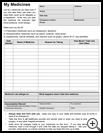
Arnica
AR-ni-ka
________________________________________________________________________
KEY POINTS
- This remedy has been used to treat several conditions. Studies in humans or animals have not proved that this remedy is safe or effective for all uses. Before using this remedy for a serious condition, you should talk with your healthcare provider.
- The US Food and Drug Administration (FDA) does not approve uses for natural remedies. The FDA does not inspect or regulate natural remedies the way they do prescription medicines. Natural remedies are not always safe.
- This remedy may cause unwanted side effects. Tell your healthcare provider if you have any side effects that are serious, continue, or get worse.
- This remedy affects your body and may interact with prescription medicines that you take. Tell all healthcare providers who treat you about all the prescription medicines, nonprescription medicines, supplements, natural remedies, and vitamins that you take.
________________________________________________________________________
What are other names for this remedy?
Type of medicine: natural remedy
Scientific and common names: Arnica latifolia, arnica montana, arnica fulgens, arnica sororia, mountain tobacco, arnica flower, leopard's bane, wolf's bane
What is arnica?
The arnica plant has a bright yellow, daisylike flower that blooms around July. The flower of the plant is used medicinally.
What is it used for?
This remedy has been used to treat several conditions. Studies in humans or animals have not proved that this remedy is safe or effective for all uses. Before using this remedy for a serious condition, you should talk with your healthcare provider.
Arnica has been used on the skin to treat:
- Arthritis
- Bruises
- Dandruff
- Inflammation
- Insect bites
- Psoriasis and eczema
- Sprains and muscle soreness
Arnica may be used in shampoos, perfumes, and other cosmetics. In small amounts, arnica may be used to flavor candy, baked goods, and puddings.
The US Food and Drug Administration (FDA) does not approve uses for natural remedies. The FDA does not inspect or regulate natural remedies the way they do prescription medicines.
How is it taken?
Arnica oil, gel, ointment, or tincture can be used on the skin. Check the label on the package for the specific dose. Do not take arnica supplements by mouth unless it is in homeopathic doses.
What if I overdose?
Symptoms of an acute overdose have not been reported.
What should I watch out for?
Do not take arnica supplements by mouth. It is poisonous. When taken by mouth, it can cause irritation of the mouth and throat, stomach pain, vomiting, diarrhea, skin rashes, shortness of breath, a fast heartbeat, an increase in blood pressure, heart damage, coma, and death. It is safe in the amounts found in foods.
Do not use arnica if you are allergic to ragweed, chrysanthemums, marigolds, or daisies.
If you need emergency care, surgery, lab tests, or dental work, tell the healthcare provider or dentist you are taking this remedy.
Talk to your healthcare provider or pharmacist about any natural remedy that you are using or thinking about using. If your provider does not tell you how to use it, follow the directions that come with the package. Do not use more or use it longer than recommended. Ask about anything you do not understand. Remember:
- Natural remedies are not always safe.
- You should not take them if you are pregnant or breast-feeding without your healthcare provider's approval. They should not be taken by infants, children, or older adults without your provider's approval.
- They affect your body and may interact with prescription medicines that you take.
- Natural remedies are not standardized and may be contaminated. They may have different strengths and effects.
What are the possible side effects?
Along with its desirable effects, this remedy may cause some unwanted side effects. Some side effects may be very serious. Some side effects may go away as your body adjusts to the remedy. Tell your healthcare provider if you have any side effects that continue or get worse.
Life-threatening (Report these to your healthcare provider right away. If you cannot reach your healthcare provider right away, get emergency medical care or call 911 for help.): Allergic reaction (hives; itching; rash; trouble breathing; tightness in your chest; swelling of your lips, tongue, and throat), vomiting, fast heartbeat, coma.
Other: Skin itching, dry skin, redness, blisters, stomach pain.
What products might interact with this remedy?
No significant drug interactions have been reported when arnica is used on the skin.
If you are not sure if your medicines might interact, ask your pharmacist or healthcare provider. Keep a list of all your medicines with you. List all the prescription medicines, nonprescription medicines, supplements, natural remedies, and vitamins that you take. Be sure that you tell all healthcare providers who treat you about all the products you are taking.
Keep all natural remedies and medicines out of the reach of children.
This advisory includes select information only. The information was obtained from scientific journals, study reports, and other documents. The author and publisher make no warranty, expressed or implied, as to the information. The advisory may not include all side effects associated with a remedy or interactions with other medicines. Nothing herein shall constitute a recommendation for the use of any remedy. Ask your healthcare provider or pharmacist for more information.
Last modified: 2016-09-22
Last reviewed: 2016-08-15

